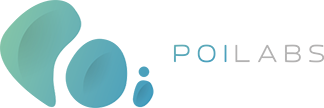Two of the biggest challenges for any business with large campuses are customer navigation and asset protection. Retailers, government agencies, college campuses – the list goes on.
It’s particular challenge for hospitals. Think about it – hospitals don’t have regularly visiting customers. And their primary customer – patients – may be there just for the day, having to navigate different departments for different tests. And for those patients admitted overnight, the number of hospital customers grows as family members and friends stop by to visit.
As for asset protection, it may even be more crucial for hospitals, as a single piece of equipment smaller than your laptop may be worth tens of thousands of dollars.
The advent of recent advances in location aware technology (such as beacon technology), has opened up a new universe of possibilities – not just for patient wayfaring and asset management – but to improve staff efficiency, customer safety and much more. The possibilities are almost limitless.
As the article points out, one way for asset tracking is by having small, inexpensive beacons installed on (or stuck to) the equipment to be tracked, Beacons are also installed unobtrusively through the facility. These beacons can “talk” to each other, so that the system is aware of the location of every beacon enabled device. On the back end, software keeps track of all equipment in real-time and staff can access all asset location information via a mobile app or a companion desktop application.
And this type of advanced solution can not only protect assets from “disappearing” but can also improve equipment availability, maintenance, and utilization, and enhance compliance reporting processes.
On the patient front, a proprietary mobile app can work with a smartphone’s mapping software to lead patients on a direct path from their location to their chosen destination. Realtime, turn-by-turn navigation can guide people from home or office to the correct hospital parking lot, into the facility and straight through to their appointment location.
Think of this, 30% of first-time visitors and 15% of repeat visitors report location-related confusion. Using location aware technology can help patients and visitors arrive at their appointments on time and with less stress, simultaneously increasing hospital traffic flow and reducing lag time between appointments.
As the article points out, many hospitals already have been using RFID systems to help with patient tracking, etc and there are many inherent advantages to using a new technology such as beacons.
